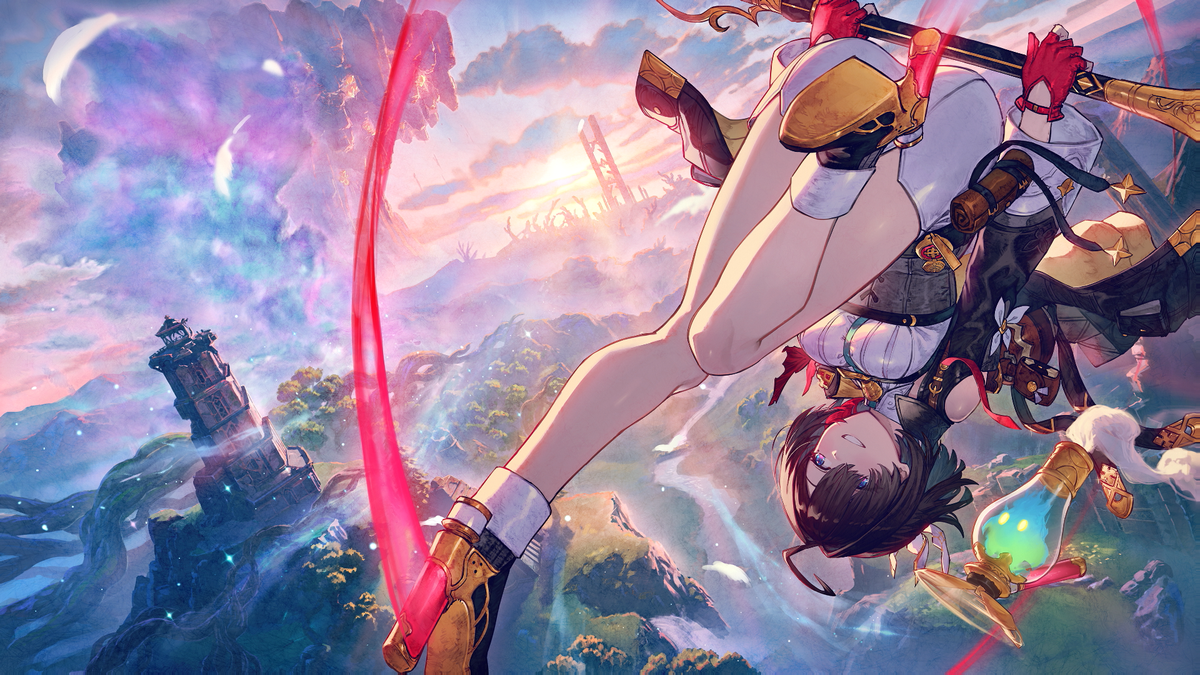
I am a simple person. When Atelier Yumia: The Alchemist of Memories & the Envisioned Land was announced at the August Nintendo Direct: Partner Showcase, two things immediately caught my attention. A woman who drives around on a motorcycle while wielding a sniper rifle? The rule of cool strikes again. Half jokes aside, the Atelier series was always one I wanted to dabble in. The coziness of its atmosphere, and using alchemy as the backbone of its world building seemed up my alley. So I was looking forward to making this latest entry my starting point.
After 40 hours of tackling both the main story and some of the side content, I left my first Atelier game enjoying the adventure, but also simultaneously feeling underwhelmed. When boiled down to its basic gameplay components, Atelier Yumia is fantastic. Combat is fast and energetic, traversal is relaxing, and the titular synthesis system threads the line between accessibility and a high skill ceiling. But with a ho-hum story and an open world offering repetitive and dull objectives, it leaves Atelier Yumia to be an overall enjoyable package that doesn’t quite deliver on its full potential.
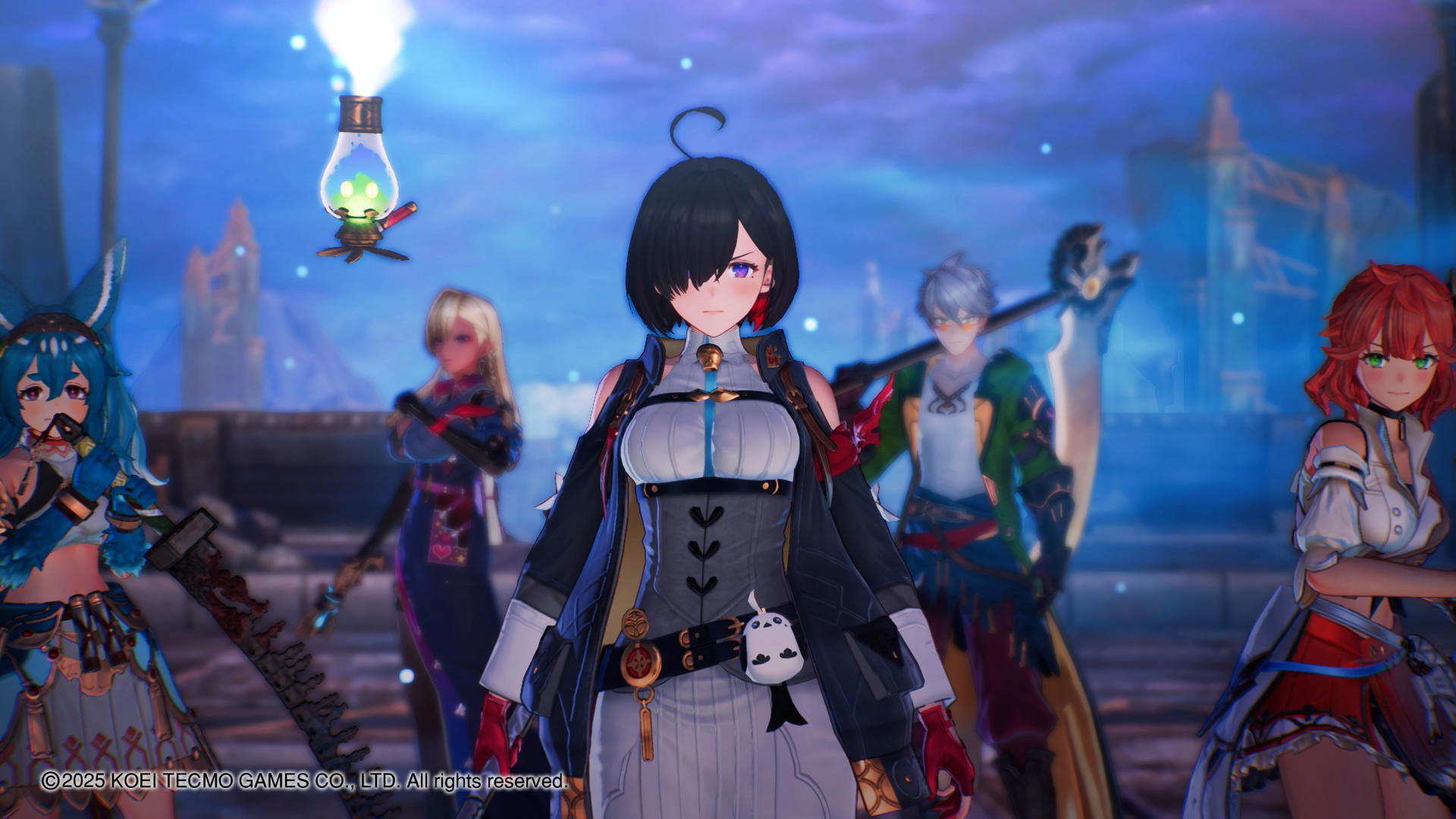
Atelier Yumia begins with an action packed flash forward, establishing the stakes, tone and antagonists from the get go. This emphasis on story sets this entry apart from the rest of the Atelier series, which brands itself having more laid back and cozy narratives in comparison to other RPGs. That’s not to say it's a complete departure, as a good five to ten hours after the cold open is spent meandering around the first region.
There is an attempt to contextualize this with Yumia being part of a research team looking for a way to clear manabound areas, but the execution is a bit mixed. On one hand, every main quest builds to uncover an overarching mystery about the world, and the motivation of the villains. On the other hand, while the pay off is satisfactory, it was not worth the considerable amount of build up and pacing issues to get there. The antagonists in particular feel severely underutilized.
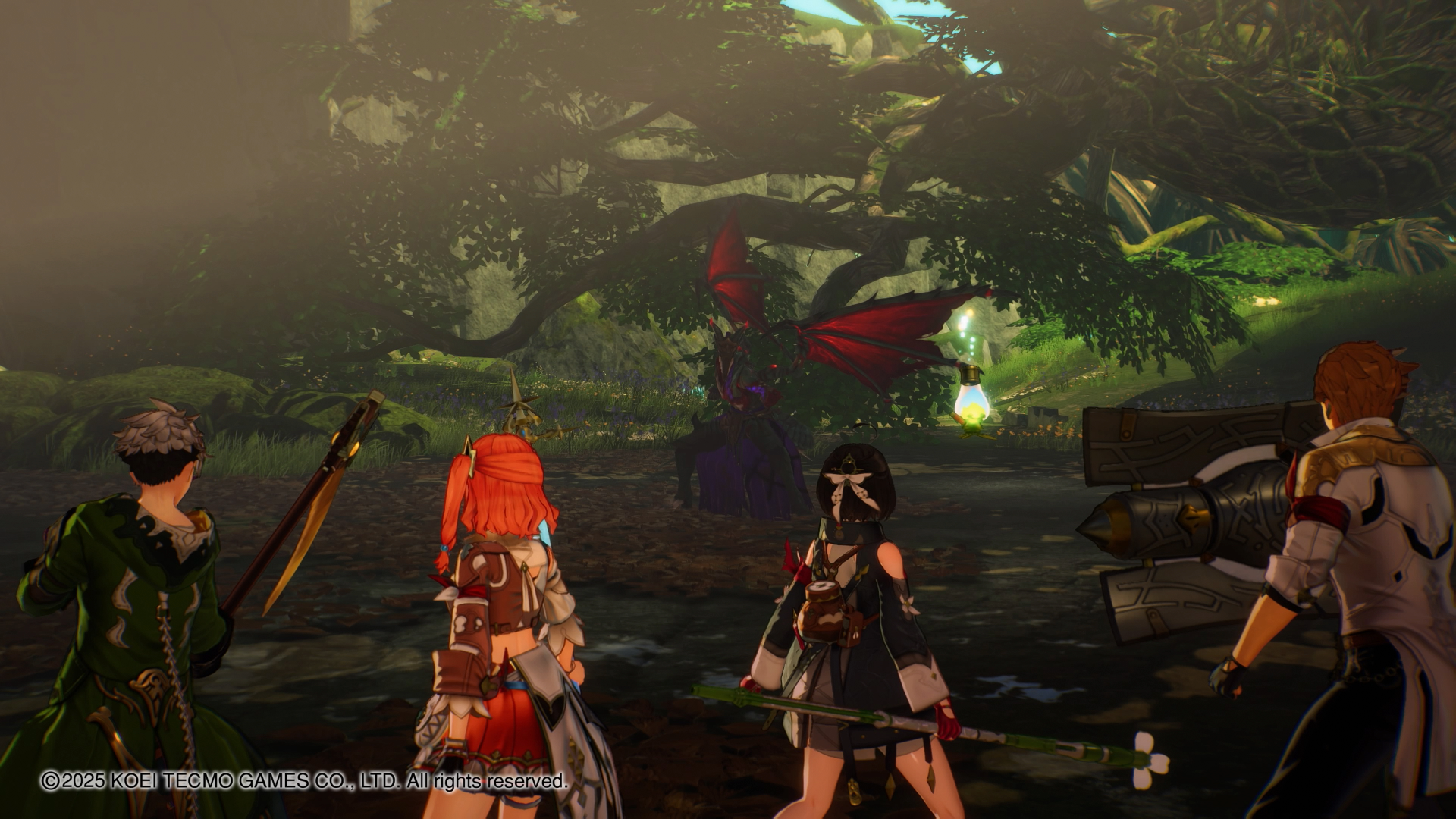
Despite this, there is one aspect of the game’s narrative that shines even through its lulls. That being how the series staple of alchemy is considered a taboo. Intrigue is painted regarding what transpired in the past to have the world fear alchemists; seeing the various NPCs across the regions show distaste for Yumia, even the party members starting out distrusting her. As a result, Yumia is a wonderful lead to follow.
Alchemy is near and dear to her heart, a reminder of her loving mother who has passed. She is much so a character married to her work, which the narrative takes advantage of when crafting her emotional depth. The superstitions serve to fuel a compelling inner turmoil for our heroine, as she questions whether being an alchemist is right or not, if she is like the monsters people claim alchemists are. Every interaction with the characters she encounters further clouds her judgment. It all culminates to a heartfelt look at the fading glow of distant memories, and how they inform actions to preserve the past, or press onto an unknown future.
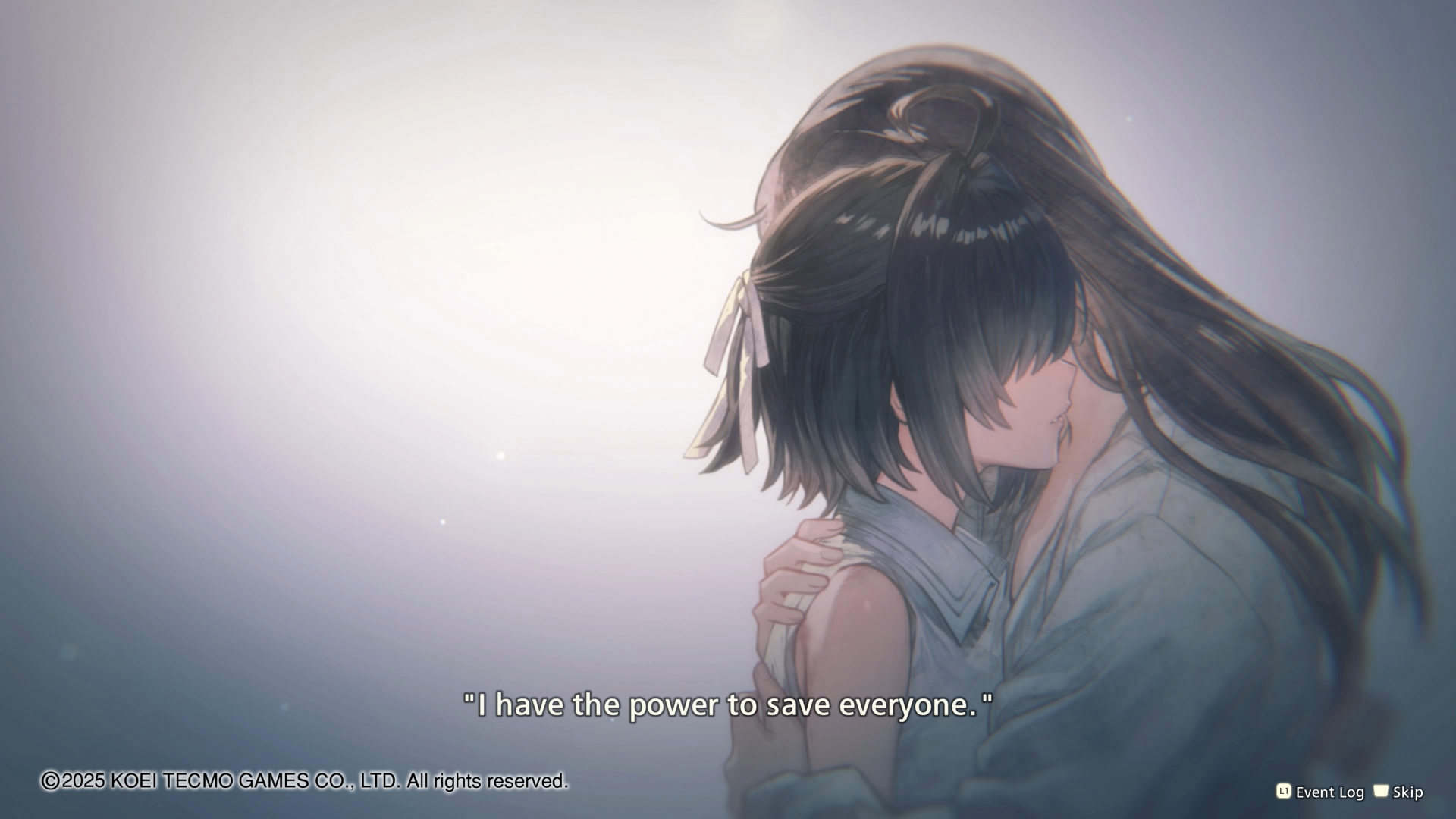
That only makes it more of a shame that the rest of the cast are some of the dullest party members I’ve encountered out of the handful of JRPGs I have played. They aren’t awful characters, just really wooden. To be fair, there is effort put into fleshing out these people, mainly through forced exposition dumps in regards to their backstory. Unfortunately it comes off as tacky, as if someone off screen is holding up a cue card saying “exposite traumatic backstory now”.
Not even their characteristics or group banter are redeeming qualities. Each one of them follows a generic character archetype. The serious noble one, the ditzy girl, the scoundrel with shark teeth. You’ve seen these types of party members done before, and done better. Much like their pasts, their personality clashes come off as tacked on, having conflicts that don’t amount to anything more than being mildly aggressive when they have a brief disagreement. They do get better later as the story expands Yumia’s agency in the plot, but by then it’s a little too late.

I am aware that story isn’t the main focus of an Atelier game. It is about inhabiting a cozy world with a cozy cast of characters, and I adored that serenity this entry nails. It’s just that outside of its titular lead, and excellent narrative premise about alchemy being a forbidden art, the game rarely ever reaches for the lofty heights it strives towards.
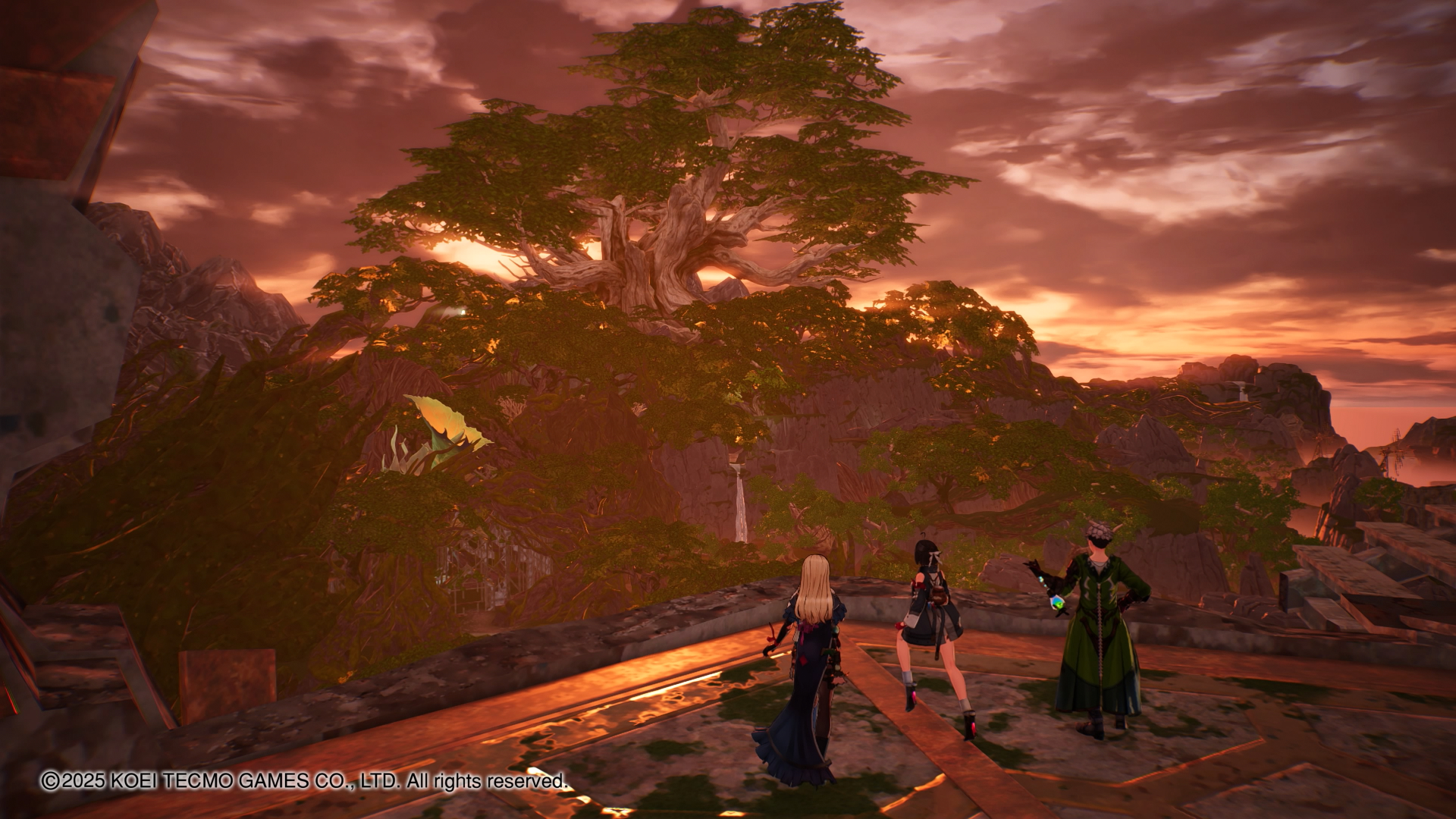
Atelier Yumia’s gameplay loop is split into three main components: Battles, open world exploration, and the series signature synthesis system. All of these are interconnected via obtaining and using resources. Exploration is the primary method of gathering more materials, so let's start there. I found it impressive how much freedom the game offers when entering a new region.
Essentially if you can walk there, nothing is stopping you from doing so right away. This does make for inconsistent story moments where the party talks about being in an area for the first time after I had already cleared multiple side activities there, but that is a minor nitpick to how unrestricted exploration is.
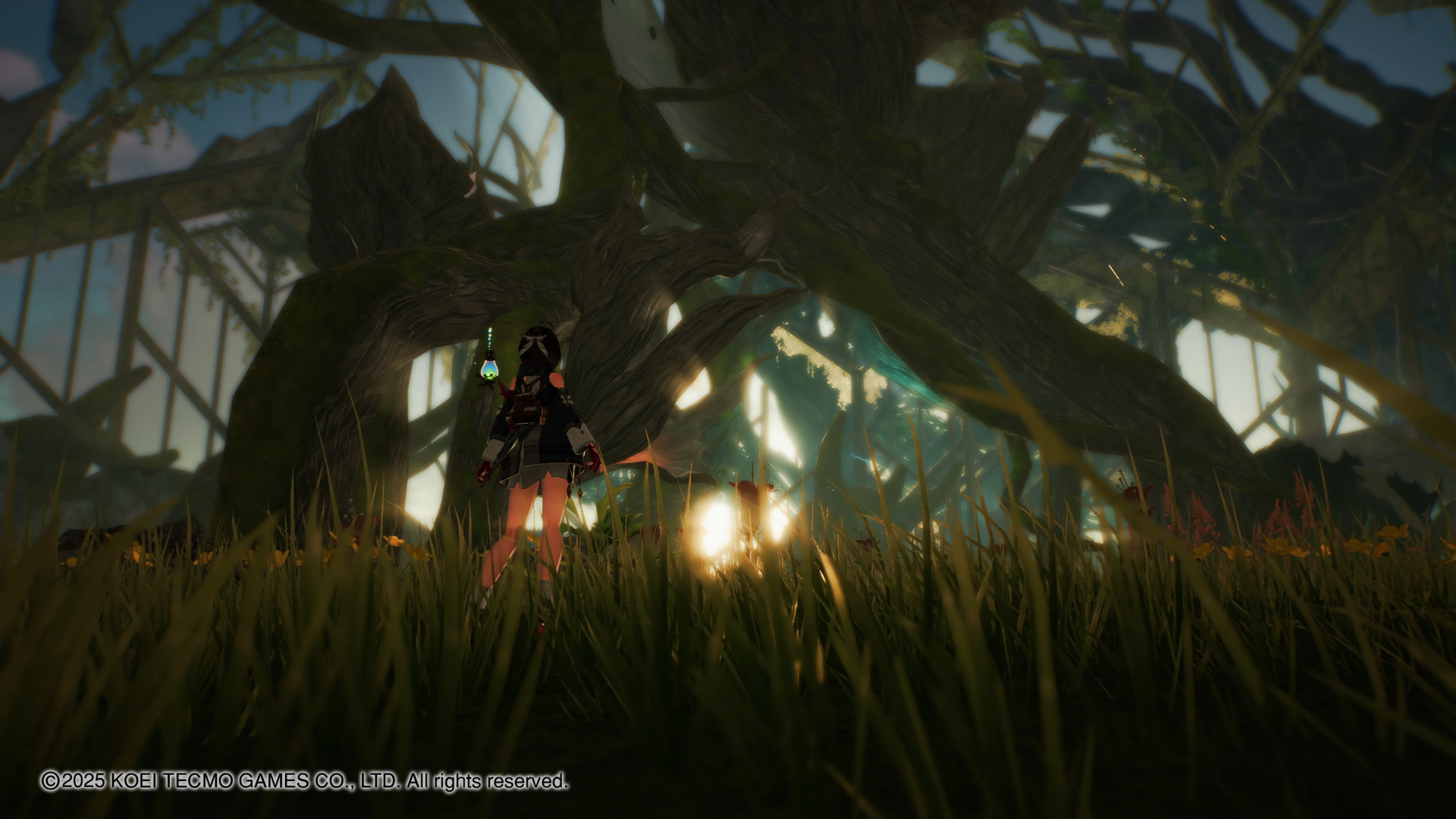
From a movement standpoint, it is what I would call delightfully janky. When traversing through the world, there is an emphasis on verticality thanks to the two wall jumps Yumia can perform. Even the narrowest of edges on a cliffside or wall has collision on them, effectively making them tiny platforms to stand on and refresh Yumia’s wall jumps. Thus even without a dedicated climbing system, a good amount of vertical terrain can be scaled with enough experimentation and brute force.
It may look goofy seeing Yumia standing in mid air, but it is worth the tradeoff as an efficient tool to bypass the need to find a path to reach the top. Speaking of navigating pathways, eventually Yumia gains access to a motorcycle, sacrificing jumping prowess in favor of speed and negating fall damage. The controls can be finicky, especially when trying to make any sort of turn, but its inclusion makes zipping across fields a breeze.
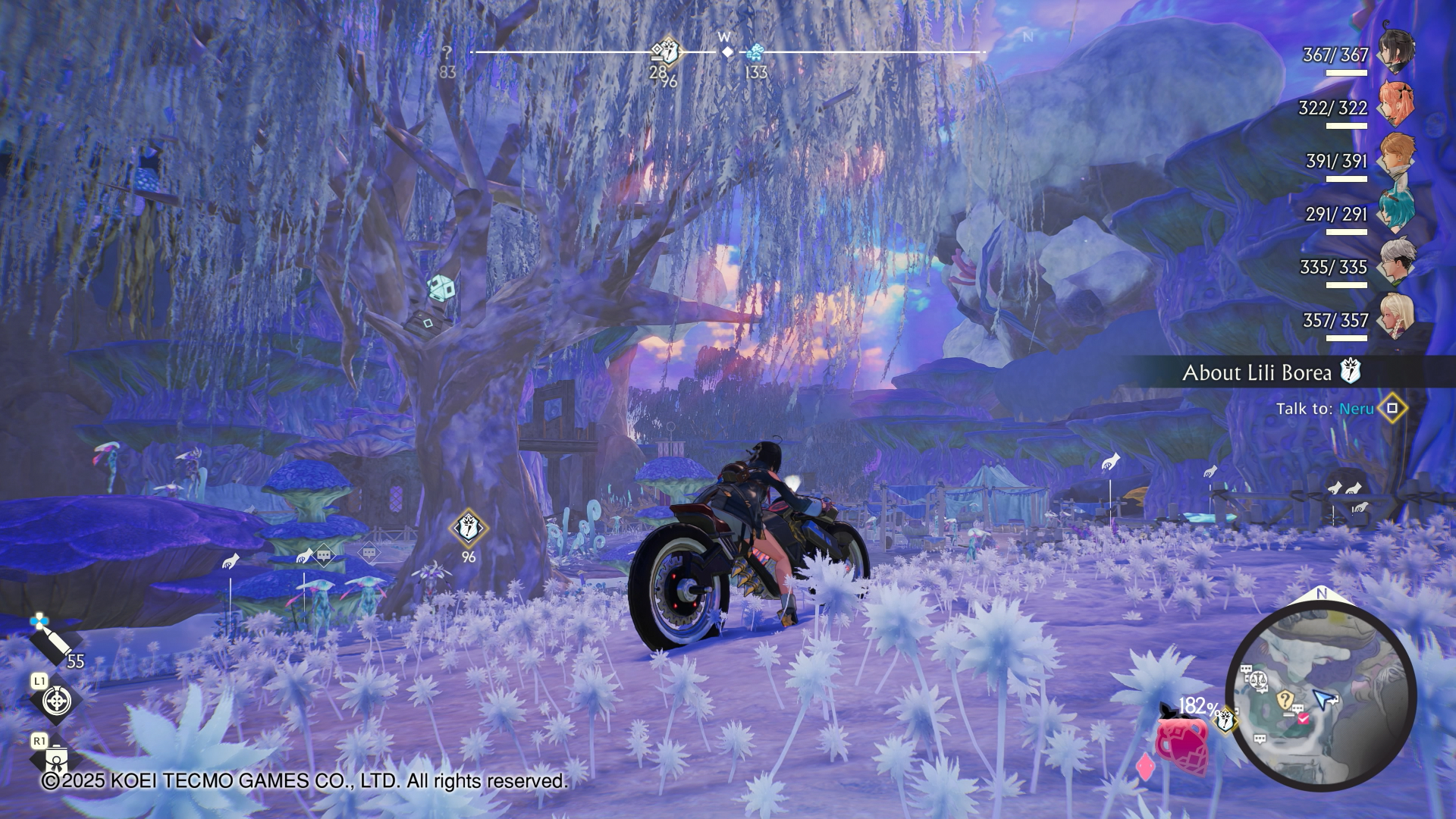
Utilizing the bike will drain the energy meter on the bottom right corner, essentially acting as a universal stamina meter for various actions Yumia can take. These range from aforementioned driving and wall jump, to crafting or gathering materials when out exploring. Moreover, when entering a new area for the first time, there is a strong likelihood that they will be manabound, draining energy overtime. Once energy runs out, the party will lose half of their resources they have gathered during an exploration session. It incentivizes efficiency when navigating the open world, making the most of the traversal mechanics while still having energy to fall back on.
Despite rarely being in danger of running out of the meter, I found it to be a clever system that manages to balance the tension and serenity that accompanies the vibe of researchers charting unfamiliar lands. Simultaneously being an ever present threat to be conscientious of, but not intrusive enough to impede taking my time soaking in each area.
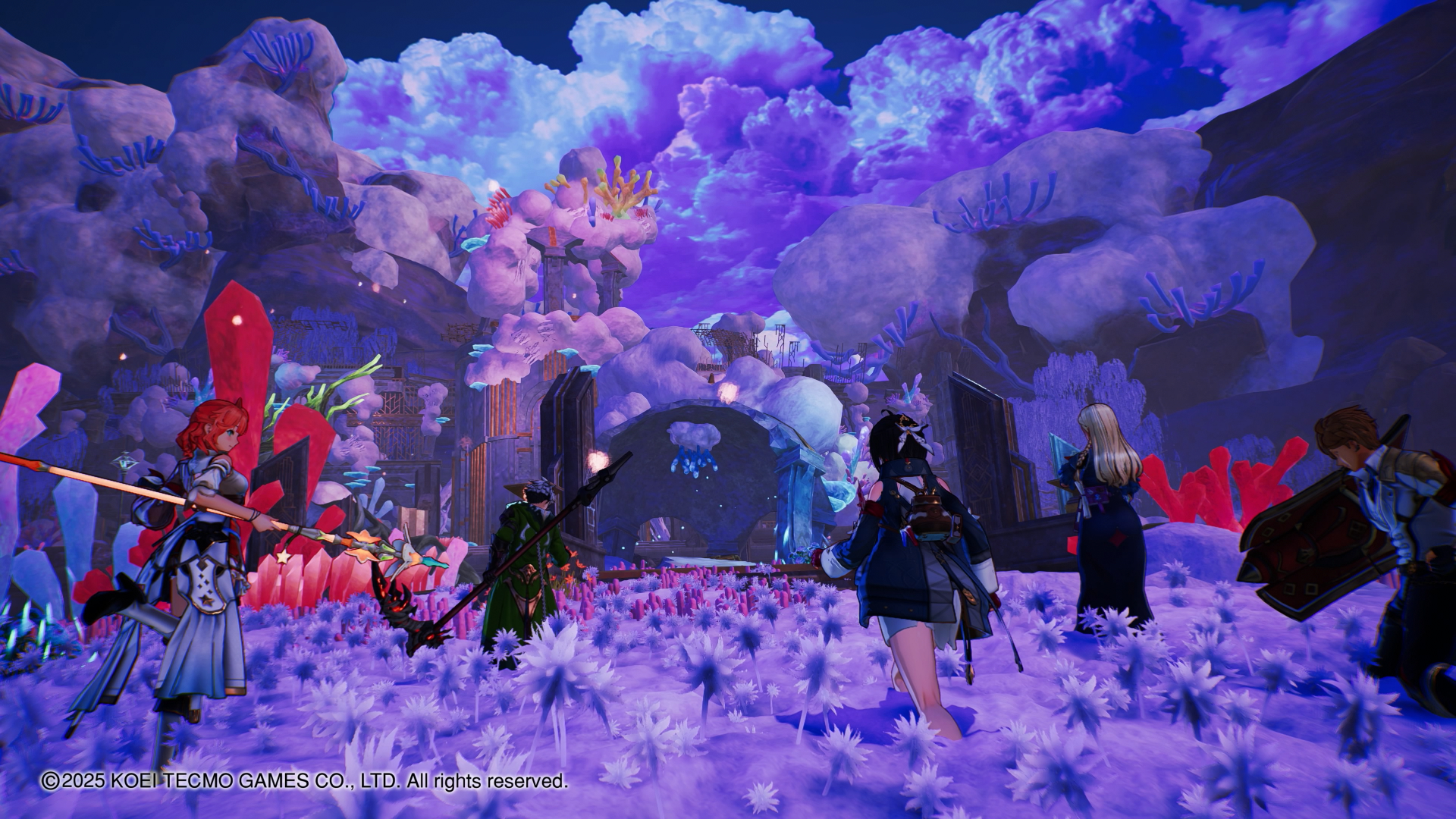
Gathering materials is the primary reward when out in the world. You’d be hard pressed to go a few feet without encountering items scattered across the environment. Additionally, Yumia’s staff also functions as a rifle, allowing her to shoot resources hanging on trees, cliffsides, or other hard to reach places. She can also aim and shoot while riding her bike, adding an extra layer of convenience and speed to the resource grinding process. Between the abundance of materials and completing the breeze side objectives that appear, there is always something around the corner in this game to engage with. I was put in a zen-like state where hours would go by as I was absorbed in this relaxing world.
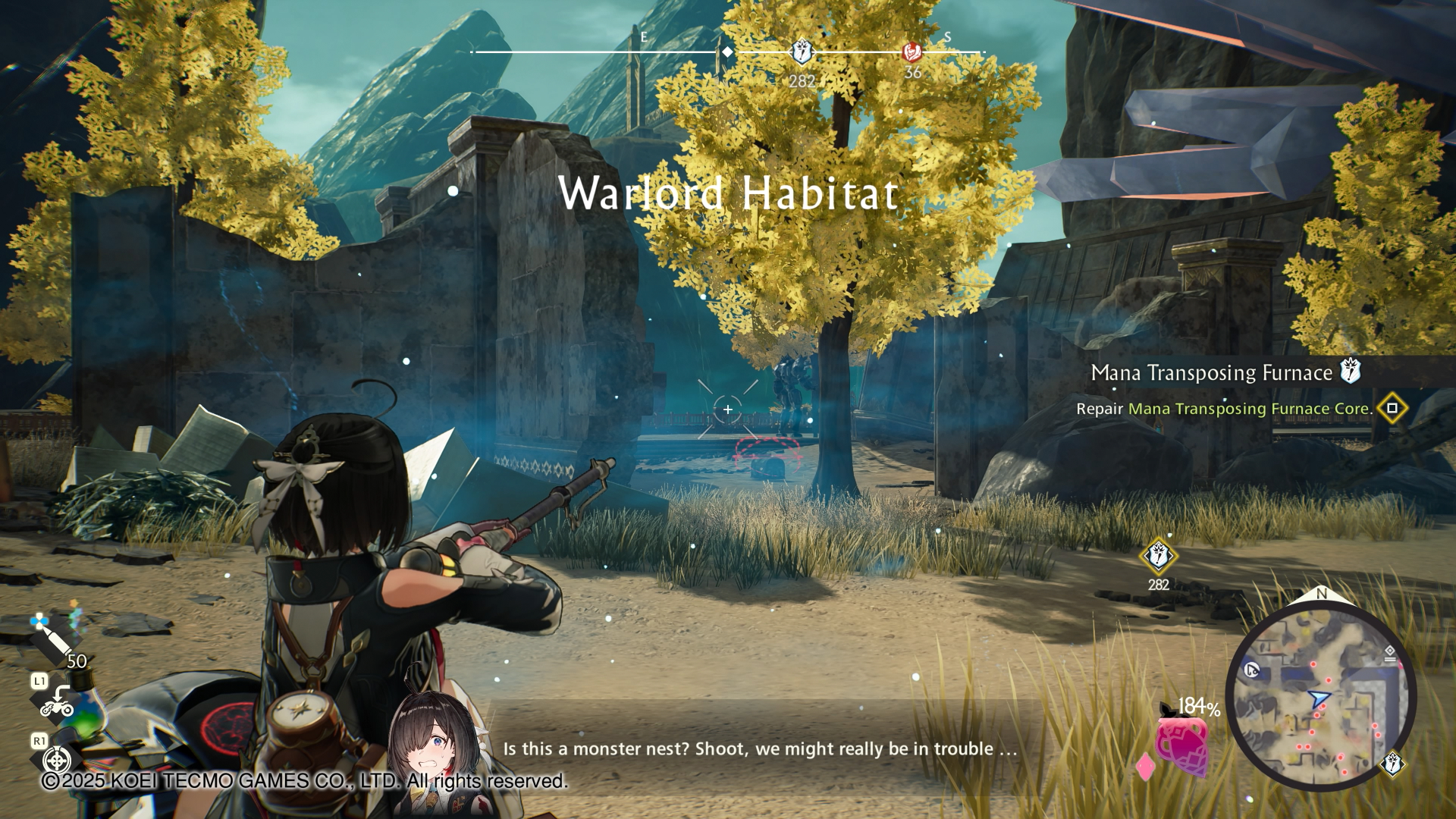
While a majority of resources will be utilized in the alchemy portion of the game, Atelier Yumia introduces two new systems to make sure resources can constantly be used: Simple Synthesis and building. Simple Synthesis allows Yumia to quickly craft items that she will rapidly expend while exploring. These include bullets, bandages for healing, and keys to open treasure chests just to name a few. I’m a sucker for Resident Evil style inventory systems, so I had a big smile when I saw the grid to arrange the various items.
Simple Synthesis does reveal mild balancing issues in regards to the usefulness of the game’s subsystems. Bullets will always be useful gathering materials and stunning enemies in the overworld. But items such as food and camping sets felt like wasted slots with how inconsequential their temporary buffs provide.

Throughout the world, the party will stumble across areas where they can build bases. These don't really serve any major gameplay boon outside fast travel points for crafting, but I found myself getting absorbed in creating the most bonkers bases possible. As long as the item you want to place is within the designated perimeter, it's fair game on where you can place it. Want to make Isaac Newton roll in his grave by creating an obstacle course of five tables in mid air to parkour towards your floating bed? Nothing is stopping you! It contributes to the coziness that Atelier is known for.
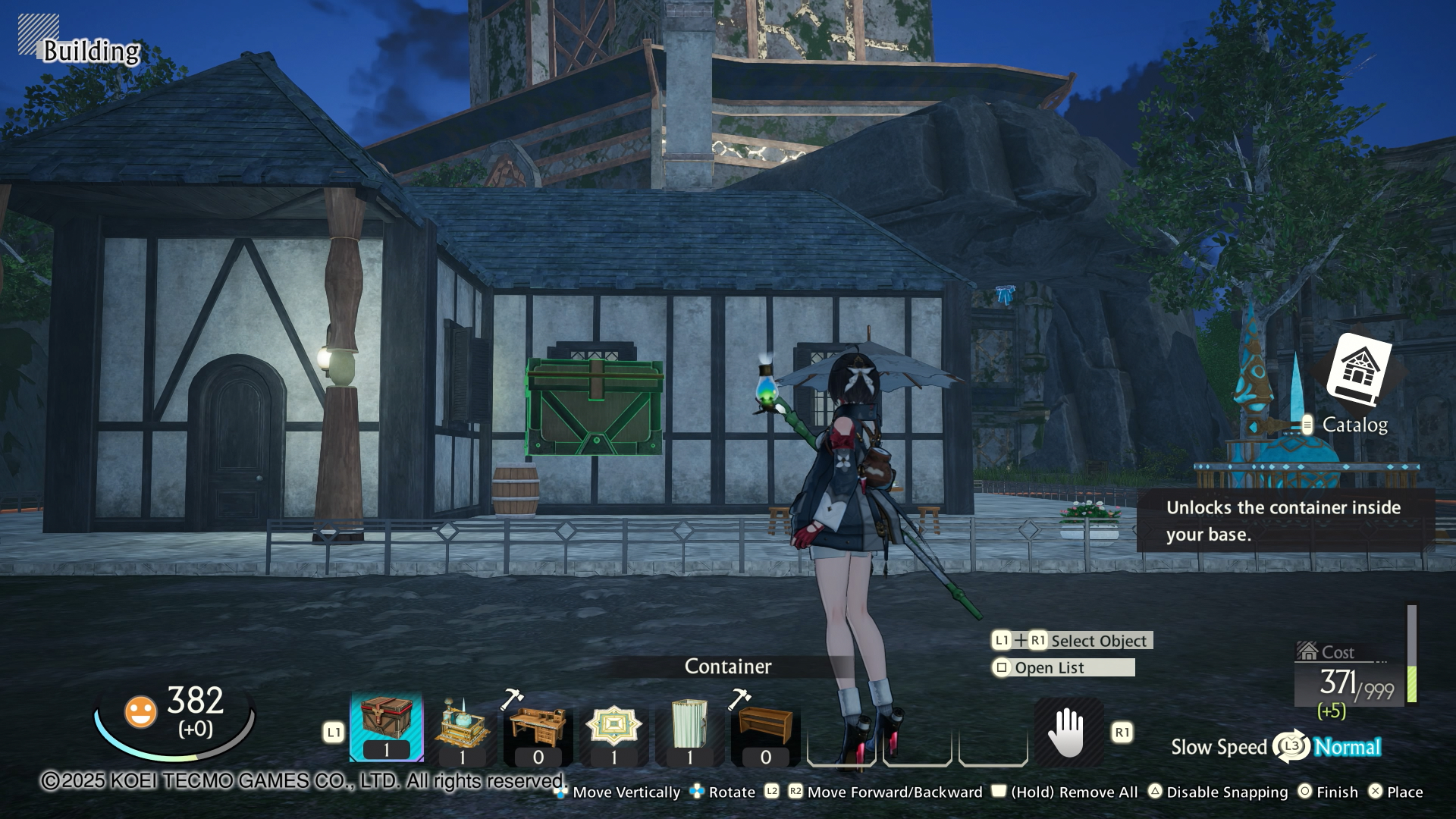
All this resource gathering culminates to the biggest hurdle for me as an Atelier newcomer, the series signature Synthesis system. Alchemy is imperative for crafting battle equipment, magic items, to even higher quality resources that can be fed back into synthesis. To be completely frank, it is still a mechanic I have difficulty wrapping my head around in terms of its nuances.
The broad strokes of synthesis has you building out three different Cores of an item. Each Core requires picking a resource to serve as its base, changing the shape and range of the Core depending on which ingredient is chosen. From there, rings will form around the base material housing more nodes to put more items in. Think of an atom’s nucleus as the base, and electron shells for the supporting ingredients. In between the rings are yellow stars called Mana, which increases the mana level of the end product when captured. Each resource has a circular range when placed in a node; the ultimate goal being to have its circle overlap with the other nodes and Mana.
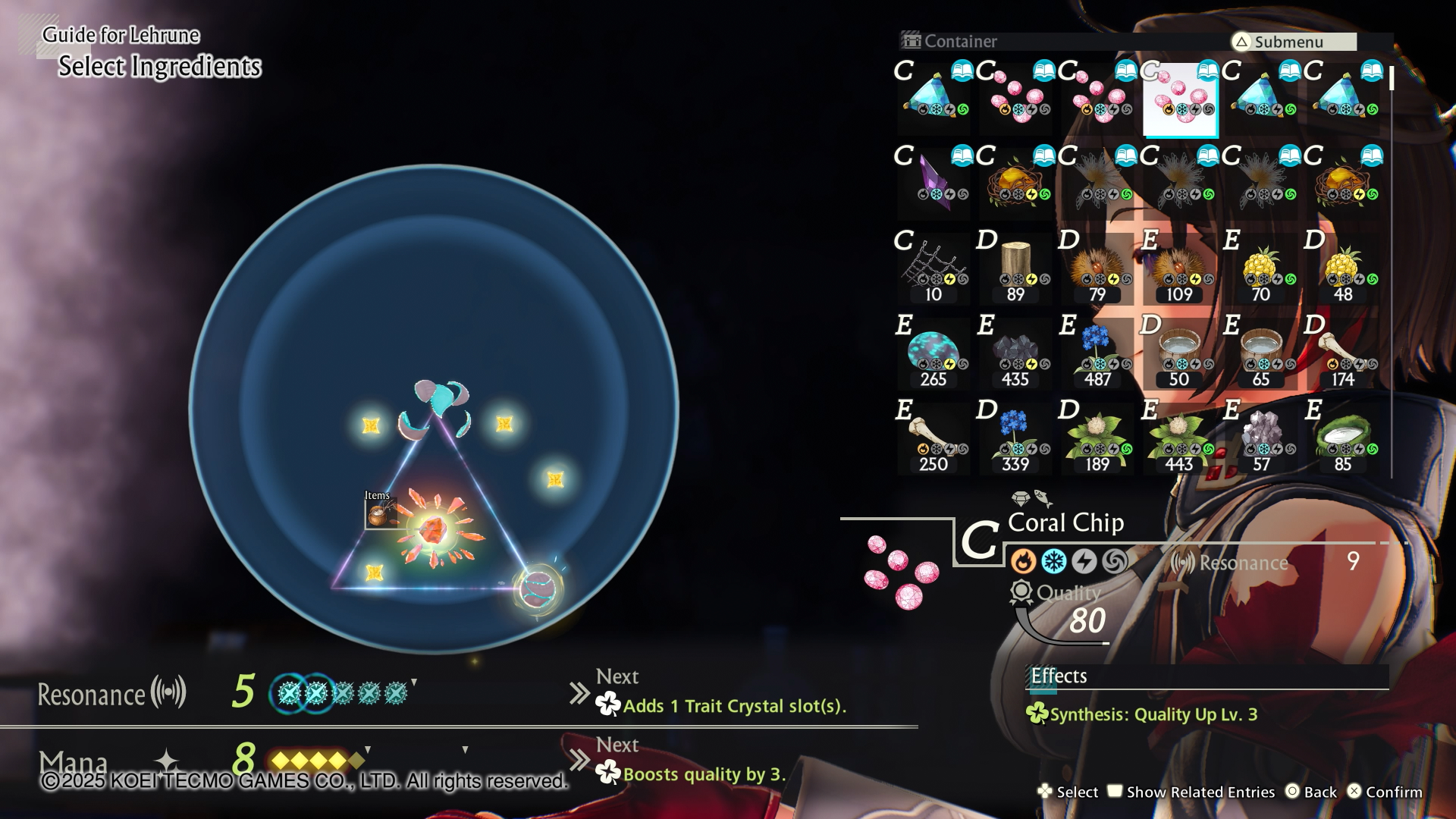
The core process of overlapping circles is easy to understand, but there is still a skill ceiling for those looking for more in depth experimentation. I suspect veterans who love taking the time to test various crafting combinations will get a kick out of trying to min max items and gear. For newcomers looking to learn, there is an option the game provides called Guided Synthesis. This initiates the Synthesis like normal, but goes over steps in the process for the player to gain an understanding of the various steps.
As for me, I couldn’t get into the alchemy personally. Grinding and min maxing gear is not really my thing. Fortunately, the game offers an auto function, allowing me to select preset or custom priorities on how I want a specific build to be crafted. Sure, it doesn’t quite eliminate the tedium I felt, and obviously these creations will not be as strong as going in to min max it yourself, but this compromise was sufficient enough for me to get through the fights on normal difficulty.
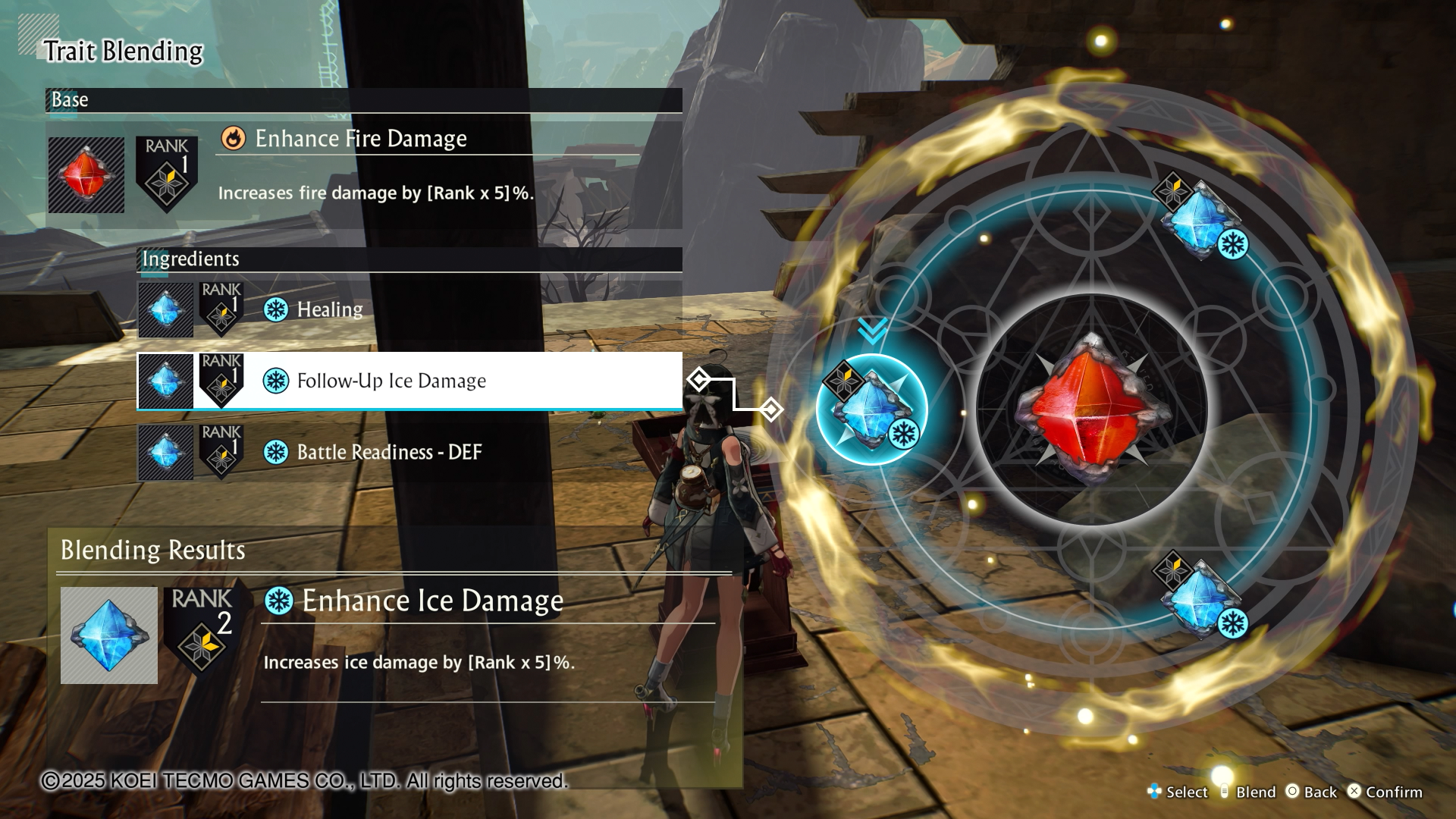
Atelier Yumia’s battle system opts for real time action, rather than continuing its turn based roots. Characters have skills they can initiate by tapping their corresponding face button, each with their own respective cooldowns and passive effects. I enjoyed figuring out the optimal order to dish out attacks to debuff and maximize damage against foes.
The standout feature in battles is how movement works. Each fight takes place within the overworld, with positioning being key not only as a defensive tool for dodging, but as an offensive one as well. Enemy attacks and wind ups are telegraphed by an orange circle or rectangle slowly being colored in over time, giving the characters ample time to dodge or swap positions. Changing whether a party member is at the front or rear also changes the attacks they can utilize. For Yumia specifically, swapping positions shifts her skill from strike attacks to ranged ones indicated by the fist and rod icons respectively. These icons are also present above enemy health bars, which ties into the stun mechanic.
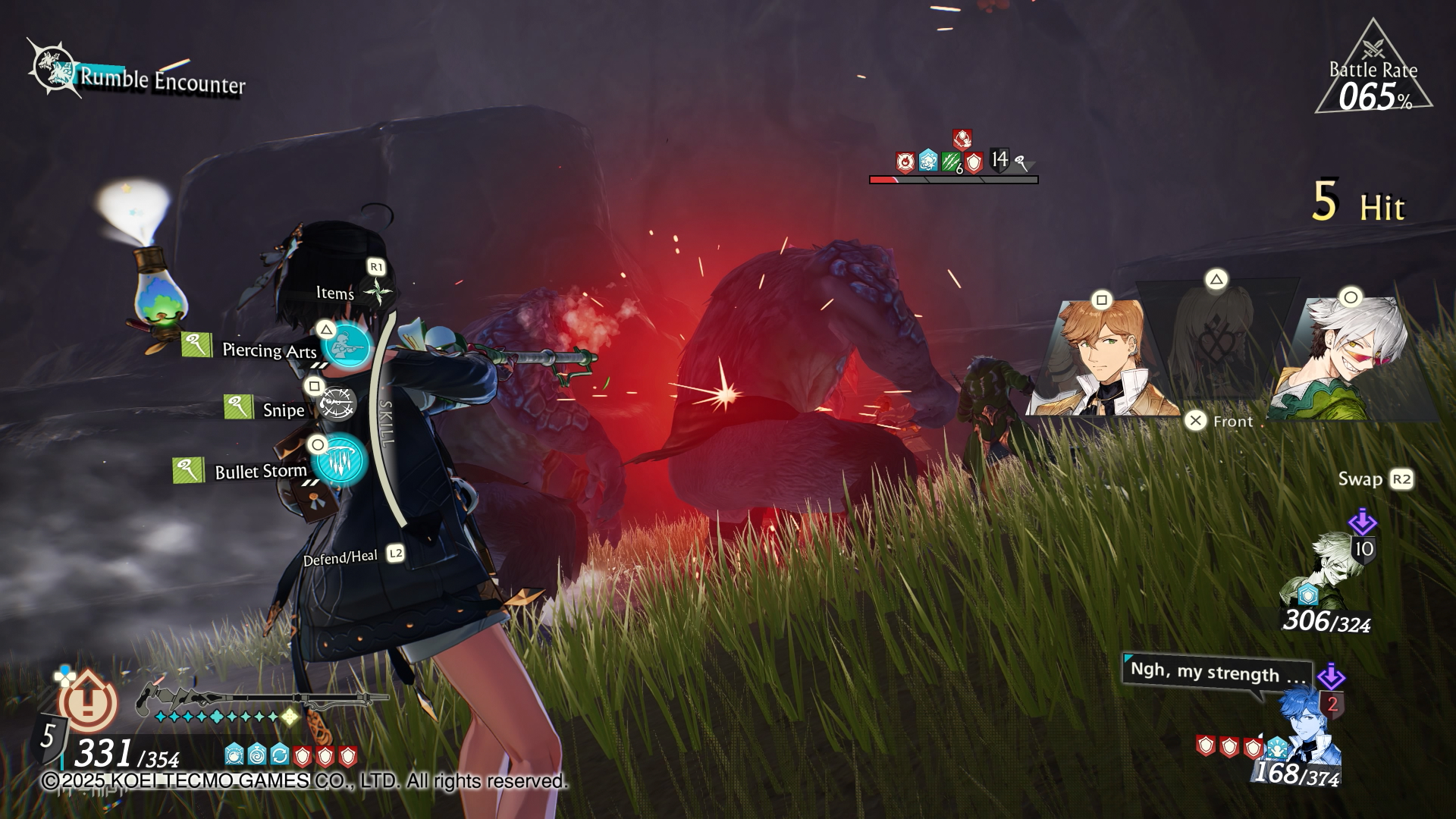
By using an attack that corresponds to the correct icon, the number next to it will deplete. When reaching zero, the enemy’s defenses will be broken and they will be stunned, meaning they are susceptible to taking more damage from their elemental weakness. This is how Atelier ties together its craftable magic items, as they are the primary source of elemental damage. During the mid game, I neglected to synthesize new items, thus all my magic consisted of barely making a scratch on foes.
This incentivizes utilizing alchemy to craft better items to take down stronger monsters. In turn, downed enemies drop their own resources providing opportunities to craft better items to use in battle. Having the resource grind be the basis of combat and exploration means there is always a sense of progression when engaging in both facets of gameplay.
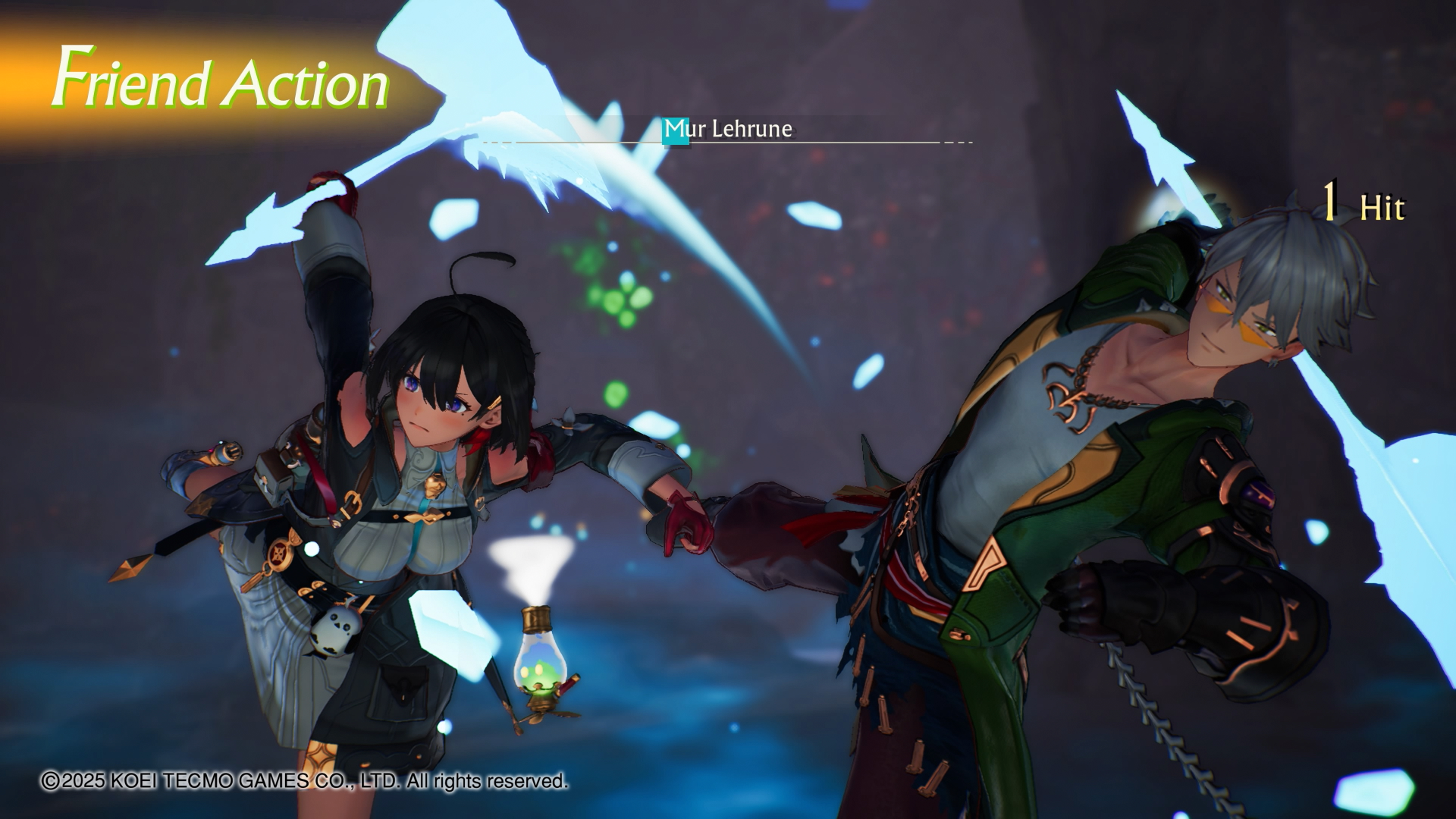
Moreover, there is a skill tree that can unlock combat abilities focused on the party working together, such as cooperative attacks and follow up attack counters. These maneuvers are accompanied by crunchy sound effects and satisfying uses of slow-mo, making the repeated animations still a joy to watch as the damage numbers pile up. Beyond the learnable buffs and techniques in combat, the skill tree additionally encompasses the exploration and synthesis components. These range from increasing Yumia’s item inventory, to receiving more bonuses during Synthesis.
Skill points are primarily acquired via exploring and alchemy, meaning the more you engage with these two systems, the more points you will acquire. The more points you acquire for upgrading, the more efficient your resource gathering and Synthesis will be. Again, there is a satisfying feedback loop in this system that contributes to the feeling of your party consistently getting stronger.
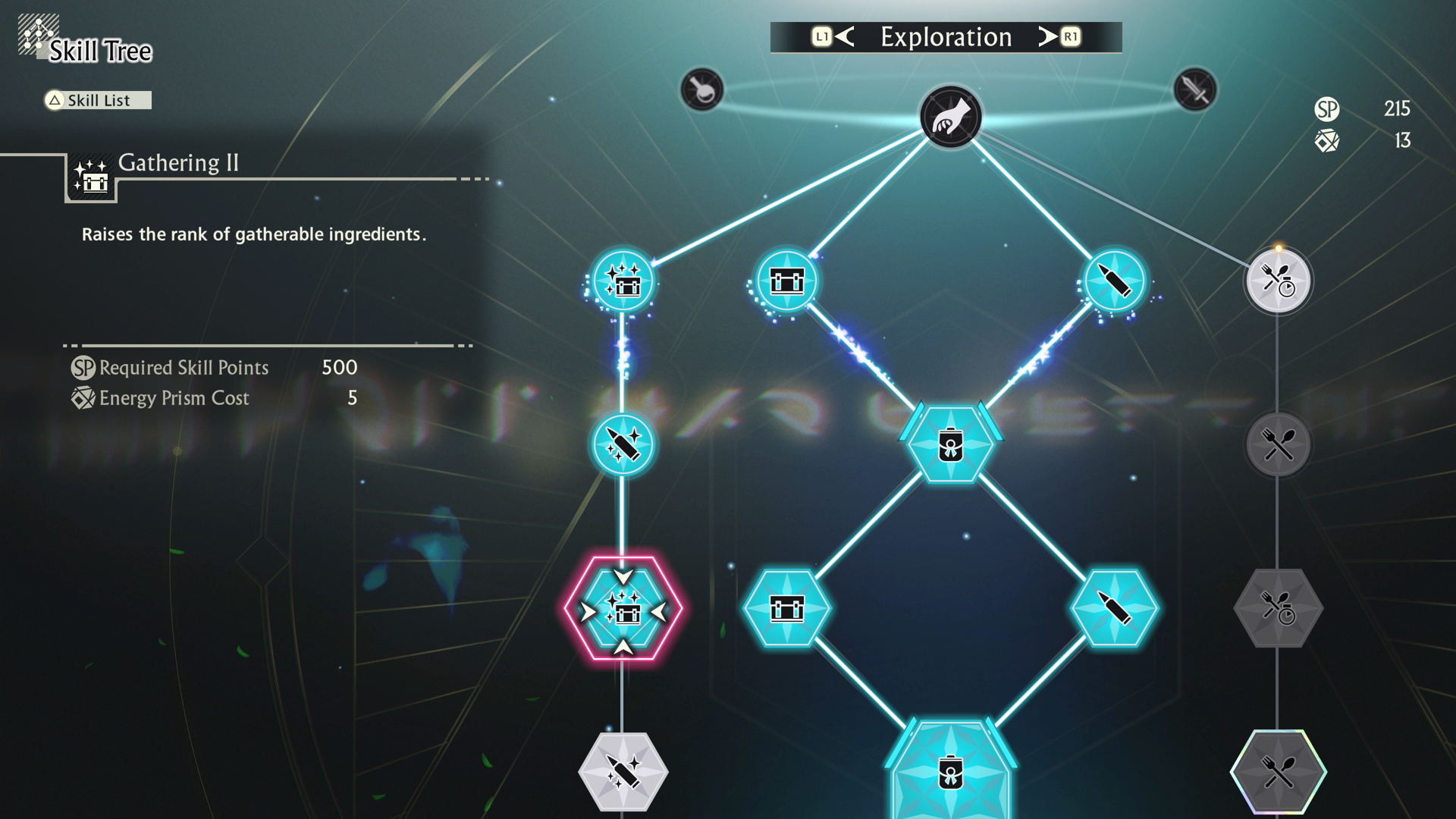
Now you'd think with all this praise I gave Atelier Yumia's interconnected gameplay facets that the game would be a slam dunk. However, while they are all mechanically sound, it’s the actual application of this solid foundation where the game falters. As I’ve explained, each component of gameplay domino effects into the other to create a more efficient grind to make the cast stronger. Regrettably, there is not much incentive to actually invest in the grind in the first place.
Most of the open world activities, main quest or otherwise are extremely dull. Main objectives revolve around the party going to a designated location on the map, talking about it, then going back to a base to further talk about it. With the slow burn of the mystery, it results in conflicts rarely happening to facilitate story battles. Most of my enjoyment stemmed from figuring out how to get to each destination, but the lack of variety caused repetition.

The optional content doesn’t fare much better, littering the map with plenty of things to do, but with a lack of depth to them. Activating fast travel points, finding treasure chests, side quests that boil down to fetch quests or fighting generic monsters; It all boils down to the same cookie cutter activities present in countless open worlds. In normal mode, rarely did the fights provide a meaningful challenge with how generous the dodge windows are, on top of the abundant amount of experience points enemies give.
By far the worst part of what the world has to offer is the puzzles, and not because they were intrusive. Most such as the wire connector puzzles or Simon says are simple, albeit mindless diversions. The one that flabbergasted me the most is the block carrying puzzles, because calling them puzzles is a generous term. These require carrying a cube to a glowing spot. There is no challenge to these, no need to avoid enemies or find an optimal path to the destination. Just pick up the block, and slowly walk to the spot to set it down. Was it a big deal in the grand scheme of things? Not really. But it genuinely felt like an insult to my intelligence every time I saw a cube a few feet next to the glowing area.
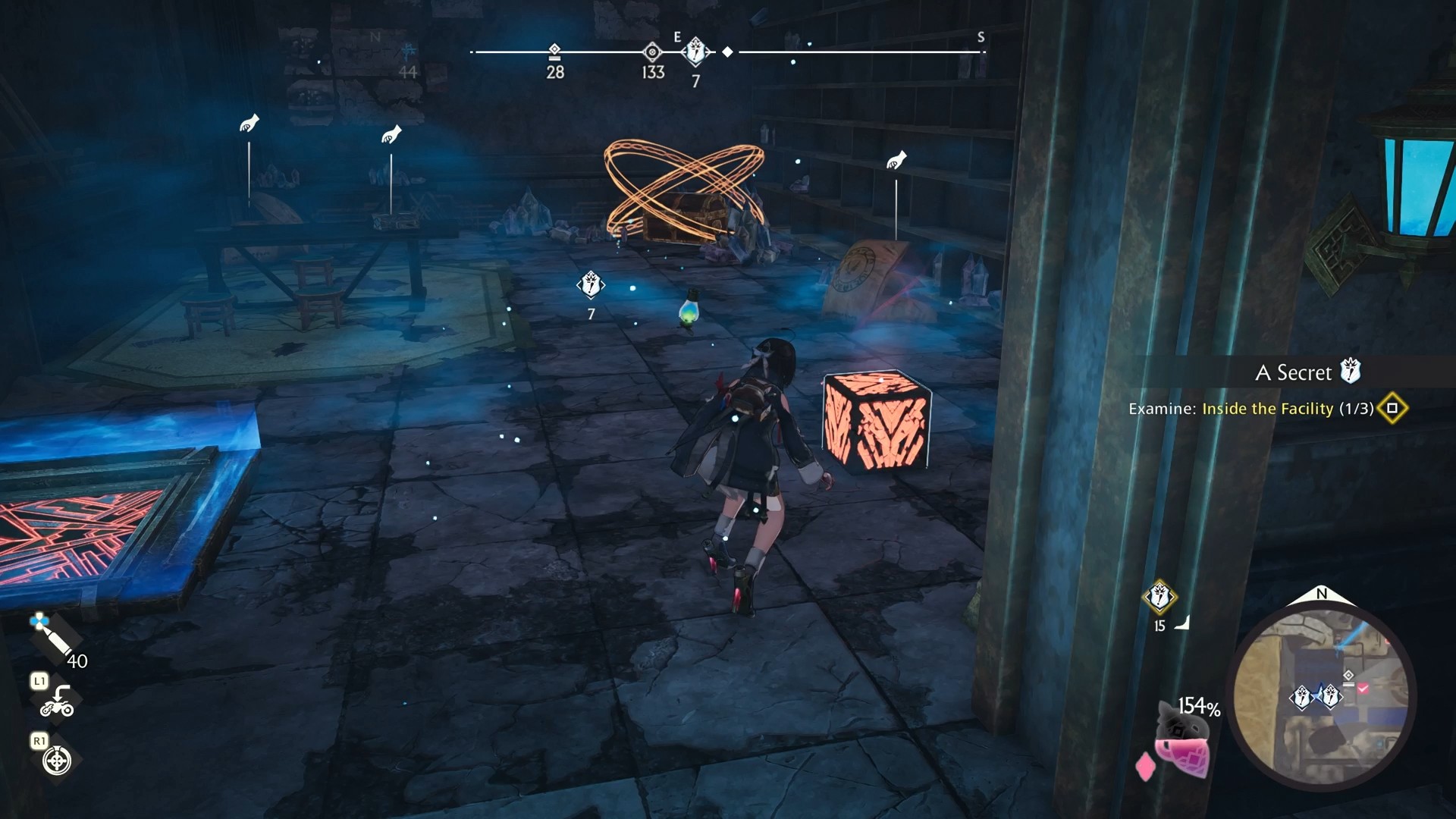
Again, I want to stress how most of these activities aren’t bad. Generic yes, but never terrible. The main hook of Atelier Yumia is the constant feeling of player progression with how the various mechanics synergize with each other. It’s just without engaging activities, it makes for a gameplay loop that while fun, is not that much fun and certainly not carrying the 40 hours I put into the adventure.
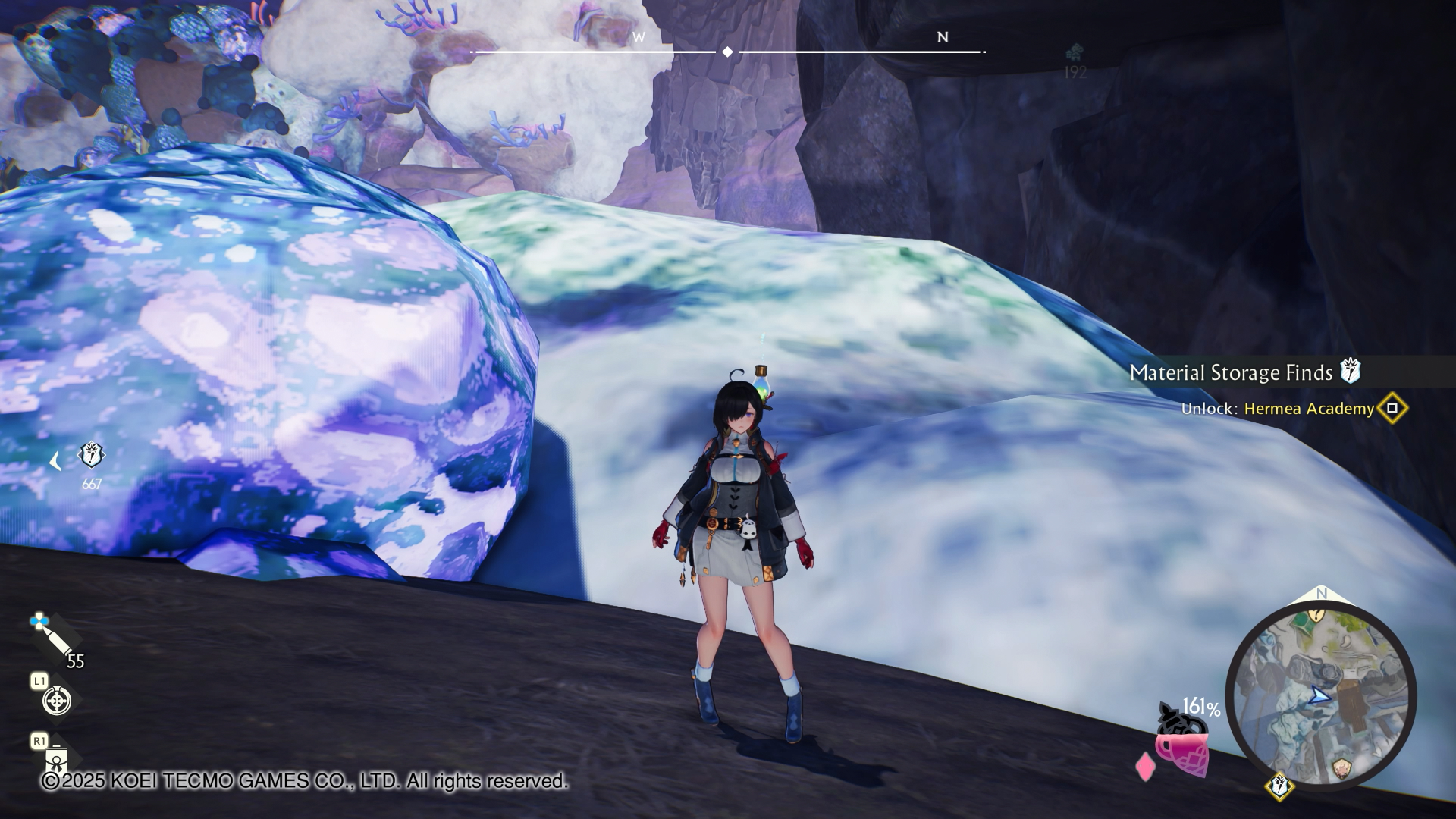
Visually, Atelier Yumia is a mess. Despite playing on PS5, it brought me flashbacks to how Pokémon Scarlet and Violet looked. It's that dire. Flat and blurry textures, non stop clipping, and horrendous bloom that brought me back to the 360/PS3 era. If a ray of light shines directly on something, then you can bet it will be radiating with a distracting glow. Fortunately the bloom can be disabled in the options menu, saving my retinas.
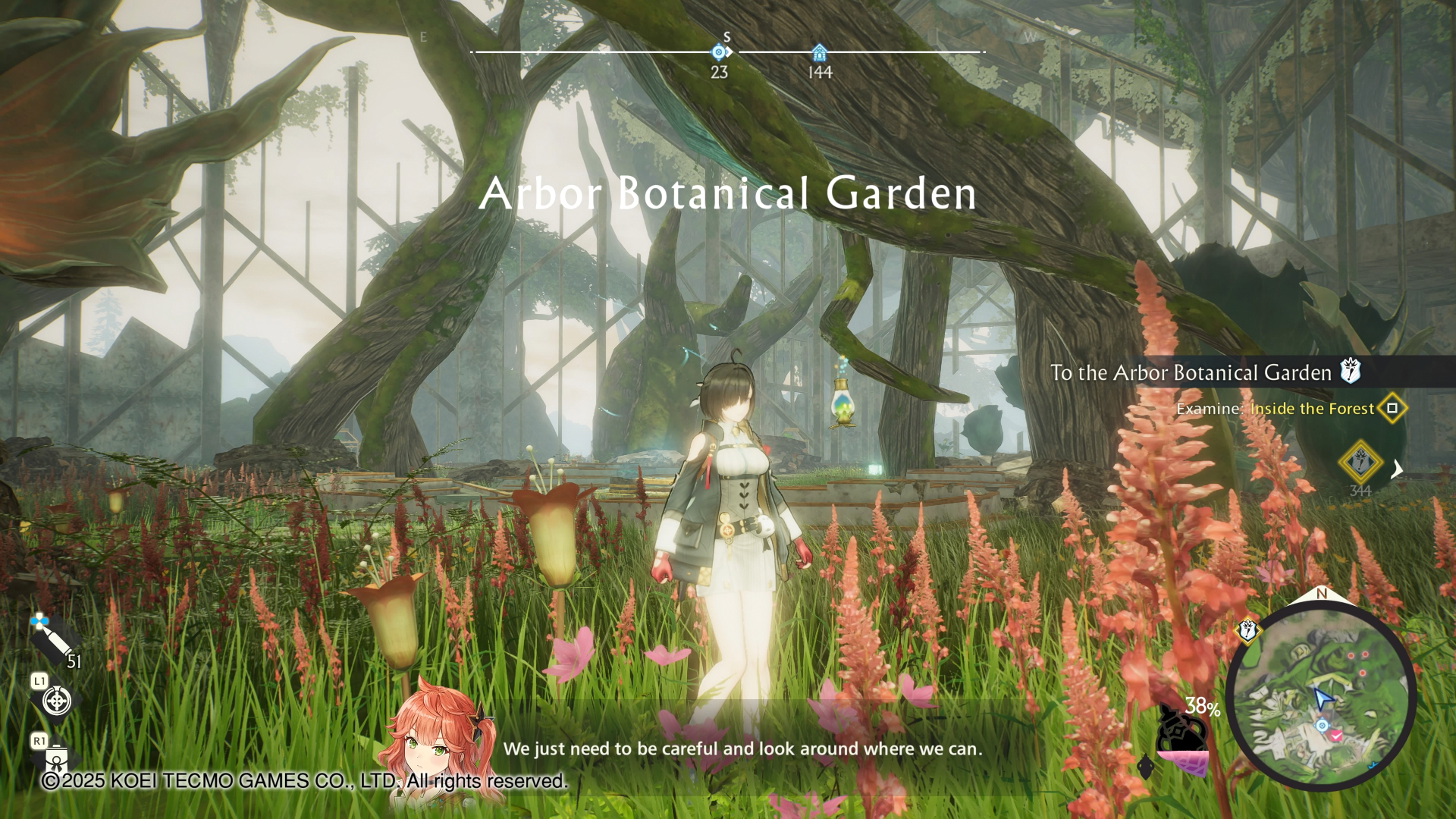
Speaking of visual quirks in the 7th gen era, not even the color palate is safe. Sometimes it can be genuinely pleasant, such as the cool hues in the snow region, or the pink and orange warmth of a serene sunset. Other times areas are just muddy browns.
Thankfully outside the clipping issues, Yumia largely runs great. Even during the most hectic of battles the framerate remained stable. The only major bug I encountered was falling through the world after a cutscene, but the game quickly respawned me back to where I was initially.
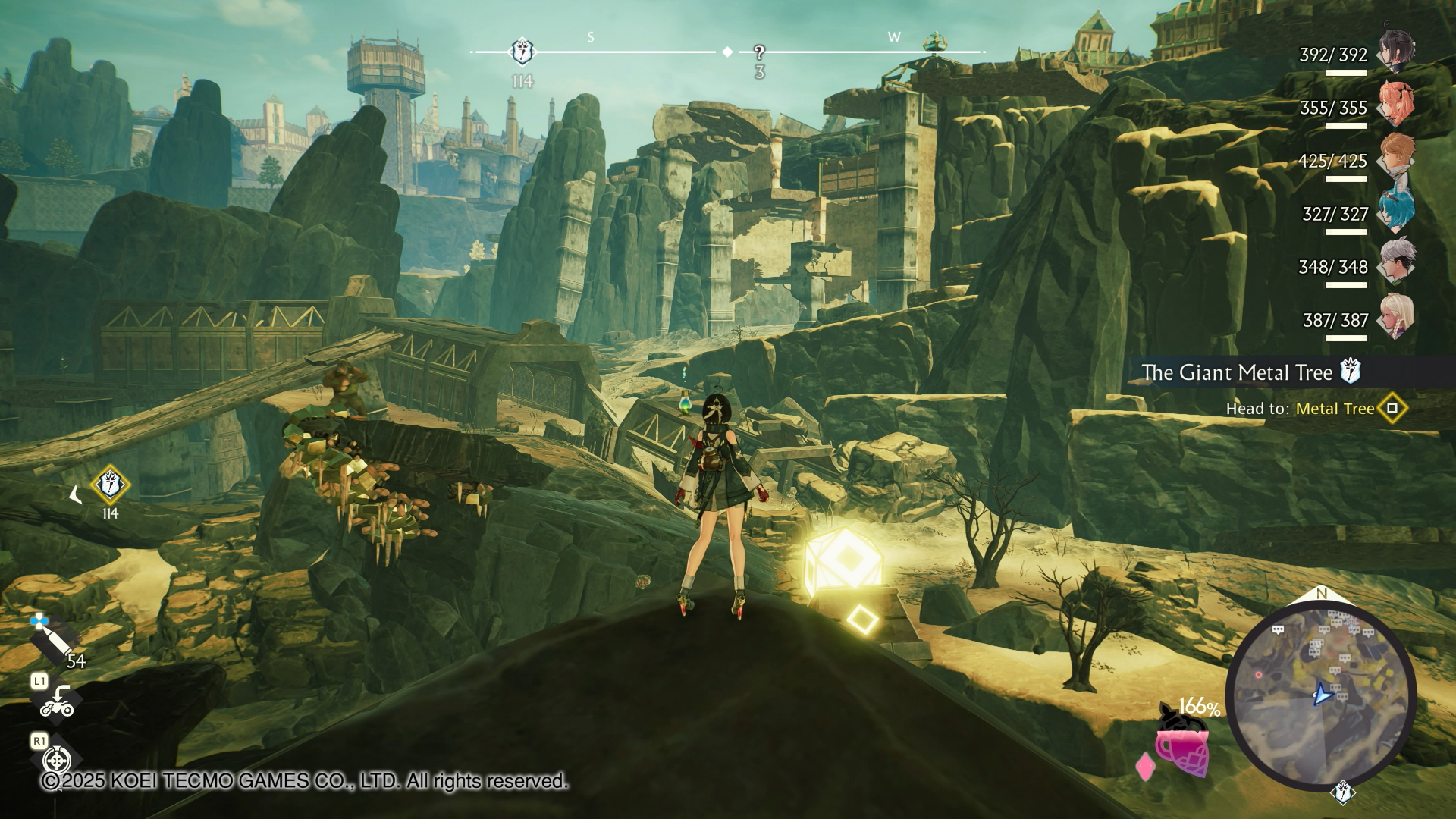
Even if the game’s presentation is a mixed bag, the actual world design excels at environmental storytelling. While the characters hammer the idea about a past calamity leading the world to have Manabound areas, the environment does the heavy lifting at turning that text into reality. Worn down buildings crumbling to the whims of nature.
Towns draped by foliage or drowned by the rising sea levels. Broken and collapsed pieces of road or trains are cleverly used as pathways diegetic to the game world. These abandoned ruins of places once teaming with life evokes visions of a forgotten life. Memories that the research party is desperate to understand.
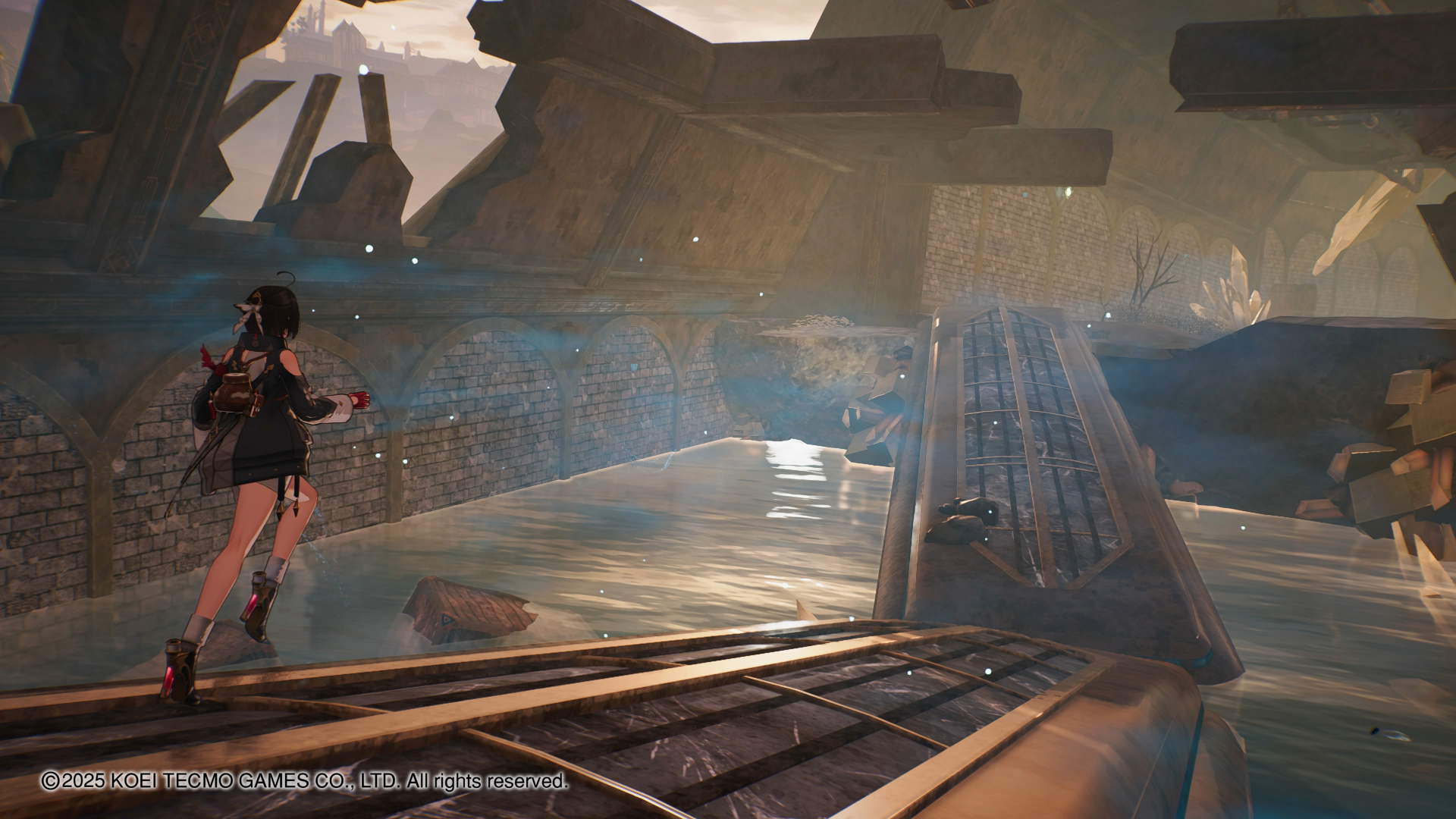
Unsurprisingly the soundtrack is phenomenal with emphasis on orchestral tunes. The overworld music is the typical soft piano that has been a mainstay in many recent open worlds, but the battle themes in particular are lively earworms, accompanied by strings and an organ that invokes a feeling of majestic hype, even when fighting low level slimes.
As for the voice acting, I am a bit bummed about the lack of an English dub, but the Japanese voice cast did a solid job bringing these characters to life. The only issue I have audio wise is how Yumia and her fellow party members adore taking. In turn, this annoyingly led to constant repeating lines during my 40 hour playtime.
Atelier Yumia: The Alchemist of Memories & the Envisioned Land
Good
About halfway through my playthrough, one thought permeated my mind through the rest of my time with Atelier Yumia: The Alchemist of Memories & the Envisioned Land: Yumia 2 is going to be a banger game. But as for this first entry, it ended up being a game I wanted to love but just ended up liking. Mechanically the game has a wonderfully constructed foundation, excelling at synergizing all the core components in its gameplay loop. But ultimately, the lack of a meaningful open world framework to justify partaking in said loop holds this latest Atelier title back. Hopefully Yumia and her band of friends gets their own trilogy to iron out the rough edges so its strengths shine brighter. But as of now, Atelier Yumia is a good game just shy of greatness.
Pros
- Strongly interconnected gameplay systems
- Yumia is a compelling protagonist
- Somber and atmospheric world building
- Fantastic soundtrack
Cons
- Repetitive and dull open world objectives
- Visually looks awful most of the time
- Story and characters doesn't reach their full potential
This review is based on a retail PS5 copy provided by publisher.
